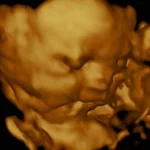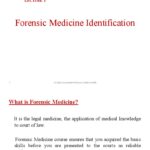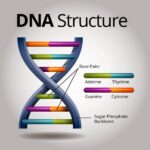The aftermath of a crime scene often evokes a morbid curiosity, a deep-seated fascination with the tangible remnants of a disruption, a transgression, an act against the established order. Beyond the yellow tape and the flashing lights, there lies a complex tapestry of clues waiting to be deciphered, a silent narrative etched into the environment. These clues, the very sinews of an investigation, are categorized into different types of evidence, each with its own unique characteristics and probative value. Understanding these categories is paramount to reconstructing the events that transpired and ultimately, delivering justice. We delve into the three principal classifications of evidence encountered at crime scenes: physical, testimonial, and documentary.
Physical Evidence: The Silent Witnesses
Physical evidence encompasses any tangible object that can link a suspect to the crime scene, establish elements of the crime, or corroborate witness statements. This category is perhaps the most intuitively understood, as it involves items that can be seen, touched, and analyzed. Think of the classic detective story – the glint of a discarded weapon, the fibers clinging to a victim’s clothing, the bloodstains marring the floor. These are all examples of physical evidence, and their potential to provide crucial information is immense. The significance of physical evidence lies in its objectivity. It exists independently of human perception and memory, making it less susceptible to bias and distortion.
Consider, for instance, a case involving a burglary. A shattered window provides immediate physical evidence of forced entry. Fragments of glass, meticulously collected and analyzed, may reveal the type of implement used to break the window and potentially link it to a suspect’s possession. Footprints left at the scene, carefully cast and compared to the suspect’s shoes, can establish their presence at the location. Even seemingly insignificant items, such as a discarded cigarette butt, can yield valuable DNA evidence, potentially solidifying a connection between the suspect and the crime. Such analyses may also include examining tool marks on doorframes or safes that point to the type of tools used and potentially connect those tools back to a suspect, or revealing trace evidence like hair or textile fibers transferred between the suspect, victim, and the crime scene.
Furthermore, the location of physical evidence within the crime scene is as important as the evidence itself. The spatial relationships between objects can provide crucial insights into the sequence of events. A weapon found near the victim’s body, for example, carries different implications than one discovered hidden in a remote location. Therefore, meticulous documentation of the location and condition of physical evidence is essential for its proper interpretation. This is often achieved through photography, sketching, and detailed written descriptions.
The analysis of physical evidence relies heavily on forensic science, a multidisciplinary field that draws upon principles from chemistry, biology, physics, and other scientific disciplines. Forensic scientists employ a range of techniques to examine and interpret physical evidence, including DNA analysis, fingerprint analysis, ballistics, trace evidence analysis, and toxicology. The application of these techniques can transform seemingly mundane objects into powerful pieces of evidence, capable of unraveling complex criminal cases. It offers a level of detail and precision that testimony and documentation often lack.
Testimonial Evidence: The Human Element
Testimonial evidence consists of statements made by witnesses under oath. This form of evidence is inherently subjective, as it relies on human perception, memory, and articulation. While testimonial evidence can provide valuable insights into the events surrounding a crime, it is also susceptible to biases, inaccuracies, and intentional deception. The inherent fallibility of human memory is a well-documented phenomenon, meaning that witnesses may unintentionally misremember details or misinterpret events.
Eyewitness testimony is often considered the gold standard of testimonial evidence; however, its reliability can be compromised by a variety of factors. Stressful situations, such as witnessing a violent crime, can impair a witness’s ability to accurately perceive and recall details. Moreover, suggestive questioning by law enforcement or attorneys can inadvertently influence a witness’s memory, leading to inaccurate or fabricated accounts. The very act of recalling a memory can alter the memory itself. Furthermore, factors such as lighting conditions, distance, and the presence of distractions can affect a witness’s perception of events. Therefore, it is crucial to carefully evaluate the credibility and reliability of eyewitness testimony before relying on it in a criminal investigation.
Expert testimony is another form of testimonial evidence, where individuals with specialized knowledge or skills provide their opinions and interpretations on matters relevant to the case. Forensic scientists, medical examiners, and other experts may be called upon to testify about their findings and offer their professional opinions. The role of expert witnesses is to assist the court in understanding complex technical or scientific issues that are beyond the scope of the average juror’s knowledge. However, expert testimony is not without its limitations. The opinions of experts can be subjective and influenced by their own biases or the perspectives of the parties who have hired them. The admissibility of expert testimony is often subject to scrutiny by the court, which must determine whether the expert’s methodology is scientifically sound and whether their testimony will assist the jury in reaching a just verdict.
Documentary Evidence: Written Records and Digital Footprints
Documentary evidence encompasses any written, recorded, or electronic information that can be used to prove or disprove a fact in a criminal case. This category includes a wide range of materials, such as letters, emails, contracts, financial records, photographs, videos, and audio recordings. The advent of digital technology has significantly expanded the scope of documentary evidence, as electronic devices generate vast amounts of data that can be relevant to criminal investigations.
Financial records, for example, can be crucial in cases involving fraud, embezzlement, or money laundering. Bank statements, credit card bills, and tax returns can reveal patterns of financial activity that may be indicative of criminal conduct. Emails, text messages, and social media posts can provide insights into a suspect’s motives, intentions, and relationships with other individuals involved in the crime. Surveillance videos can capture crucial moments of a crime, providing irrefutable evidence of a suspect’s presence at the scene or their involvement in the offense.
The authenticity and integrity of documentary evidence are of paramount importance. Electronic documents can be easily altered or manipulated, making it necessary to establish a chain of custody and verify the accuracy of the information. Forensic investigators employ a range of techniques to authenticate documentary evidence, including analyzing metadata, verifying digital signatures, and comparing documents to known samples. The process of extracting, preserving, and analyzing electronic evidence requires specialized expertise and adherence to strict protocols to ensure its admissibility in court. The information age has brought forth unprecedented challenges and opportunities in the world of criminal investigation, making the meticulous handling and analysis of documentary evidence more critical than ever before.
In conclusion, the investigation of a crime scene is a multifaceted endeavor that relies on the careful collection, analysis, and interpretation of various types of evidence. Physical evidence provides tangible links to the crime, testimonial evidence offers accounts from witnesses, and documentary evidence provides written records and digital footprints. Each type of evidence has its strengths and limitations, and it is through the convergence of these diverse sources of information that investigators can piece together the truth and bring perpetrators to justice. The allure of the crime scene may lie in its darkness, but it is in the diligent study of the evidence that we can ultimately shed light on the truth.










Leave a Comment